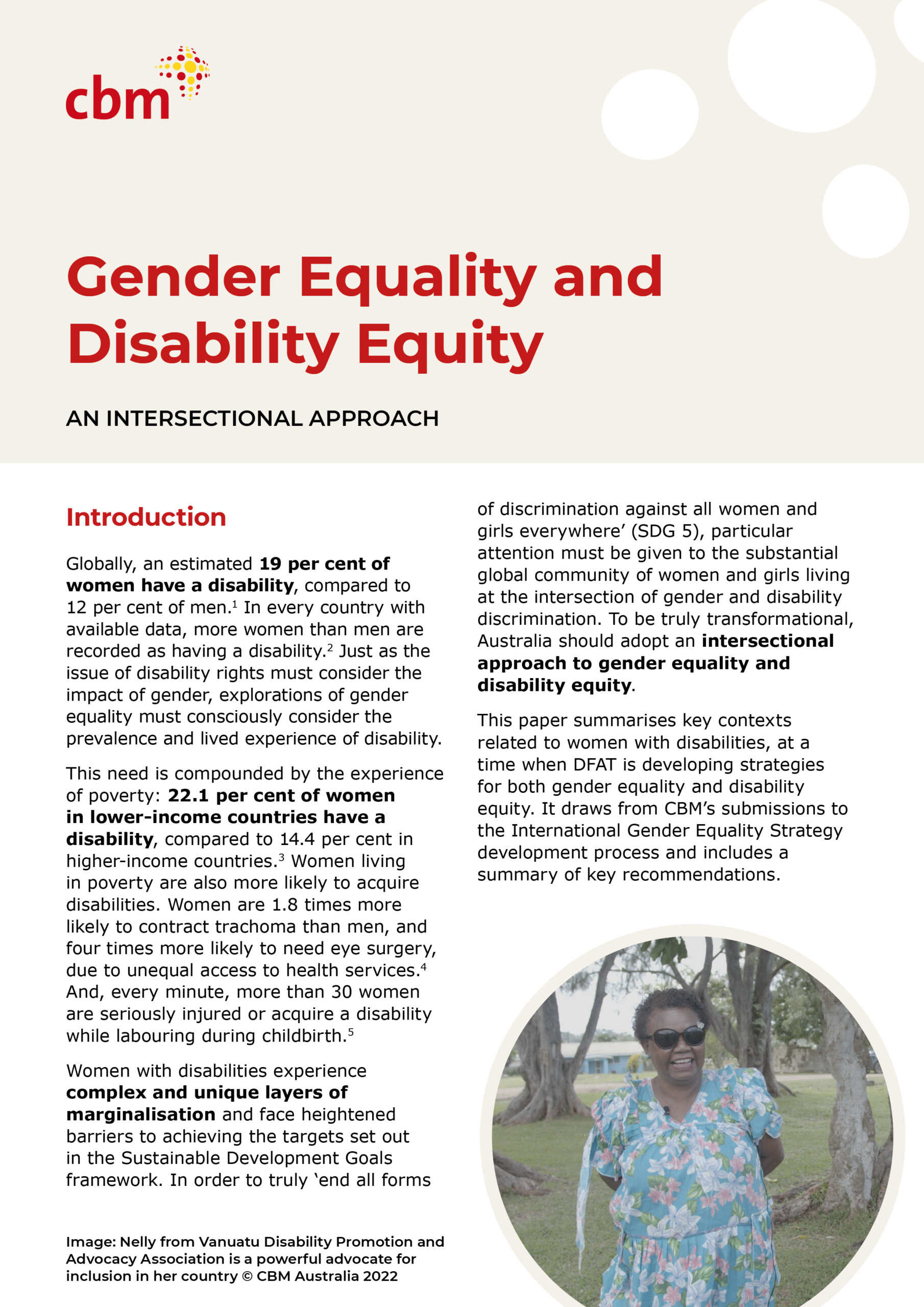
Women with disabilities experience complex and unique layers of marginalisation and face heightened barriers to achieving the targets set out in the Sustainable Development Goals framework. In order to truly ‘end all forms of discrimination against all women and girls everywhere’ (SDG 5), particular attention must be given to the substantial global community of women and girls living at the intersection of gender and disability discrimination. To be truly transformational, Australia should adopt an intersectional approach to gender equality and disability equity.
This paper summarises key contexts related to women with disabilities, at a time when DFAT is developing strategies for both gender equality and disability equity. It draws from CBM’s submissions to the International Gender Equality Strategy development process and includes a summary of key recommendations.
